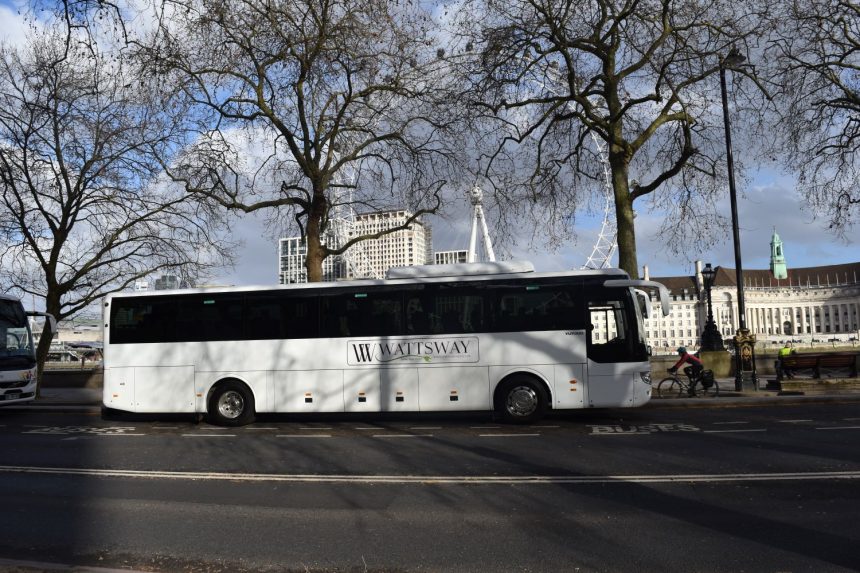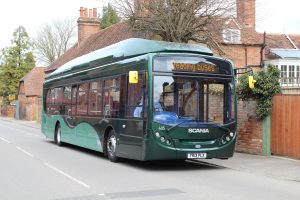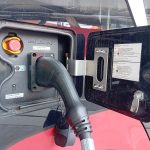With the switch to zero-emissions likely to take time, options such as biofuels and compressed natural gas are likely to play a part for coach and bus
While much of the attention is on battery-electric and hydrogen technology in the quest to reduce the environmental impact made by UK’s coach and bus fleets, many in the transport and renewable energy industries are pushing for a more open-minded approach.
The country leads the way among EU27+3 nations in the switch away from fossil fuels when it comes to bus, with battery-electric clearly the most popular option. However, there remains some way to go, with only 4% of the entire fleet battery-electric or hydrogen as of April 2022, according to a Transport Committee report published in March this year. The coach sector lags further behind, thanks to less government funding and concerns over battery range which translate to hydrogen being brought more into the equation.
Particularly bearing in mind last month’s government announcement delaying the phase-out date for new petrol and diesel cars and the uncertainty around what that means for coach and bus, alternatives in the shorter-term to battery-electric and hydrogen could provide a massive reduction in carbon emissions.
RTFA: look at low-carbon
The Renewable Transport Fuel Association (RTFA) is a trade body encouraging the uptake of sustainable and renewable low-carbon liquid and gaseous fuels. Its Chief Executive Officer, Gaynor Hartnell, believes we need more immediate solutions such as biofuels as well as long-term ones.
“I think there should be lots of pressure to go electric because it probably will be ultimately the way things go, but it should be done in the right way and we should also do what we can today with the fuels,” she says. “We’re not anti-electric. It’s just all of government policy seems to be focused more in that direction. We’re saying don’t forget to deal with the things you can deal with today.”
Saying that the transport industry needs to have a ‘plan B’, she adds that the government’s approach of setting deadlines is not ideal. “I personally think that it’s not the right way of getting a good environmental outcome to have this combination of saying you can’t sell any of these vehicles after this date and it must be battery or something else,” she says. “A better way of doing it would be to say that the fossil carbon emissions per kilometre driven have got to come down and down and you don’t give a specific end date. The OEMs (original equipment manufacturers) would innovate for themselves and deal with the situation and they may decide to switch over to battery-electric before that specific date or afterwards. They might say that, for coaches, we’ll have the solution in the fuel rather than in the drivetrain.
“You could combine with that the obligation of the businesses that supply fuel to have an increasing amount of renewable proportion and, that way, you do two things – you let innovation happen at its natural speed for the OEMs and you also deal with the existing vehicles that are already on the roads. The current arrangement is very binary.”
The case for a short-term plan was also made by Christopher Hendrickson, Director of the transport research lab Traffic 21 Institute at Carnegie Mellon University in Pittsburgh, Pennsylvania. As co-author of the 2017 paper Which Alternative Fuel Technology is Best for Transit Buses?, his research helped guide Pittsburgh authorities to choose battery electric to serve its decarbonisation goals. However, he feels drop-in, low-carbon liquid fuels may be needed more for long-distance coach services. He says: “Long-distance and heavy-duty services are really going to need alternatives for at least the next decade. Right now, we’re probably facing five to ten years of supply chain shortages in batteries.”
Hydrotreated vegetable oil (HVO), which is a drop-in fuel and can be used in diesels engines without modification, was highlighted by the Confederation of Passenger Transport Zero Emission Coach Taskforce’s (ZECT) Coach Route Map to Destination Zero paper published this year. The report cited a trial which showed running costs were 5-10% higher with HVO than diesel but that the former could reduce carbon emissions by more than 90%.
The other option promoted by ZECT was biodiesel, which is already widely used by operators at lower blends such as B7 or B20. However, the use of higher blends, or pure biodiesel at B100, which would bring greenhouse gas savings of up to around 92% versus diesel, would require engine modifications. Gaynor explains: “With 30%, you may have to do more frequent oil-filter changes and that kind of thing. At 100%, you’d need to have heated fuel tanks and heated fuel line from the tank to the engine.”
A financial carrot from the government to use these more expensive alternatives is seen by some as a necessary way of reducing environmental impact now, given that the transition to battery-electric or hydrogen will take time, particularly in the case of coaches. Gaynor adds: “We’d like there to be some sort of incentive to move from the bog-standard diesel, B7, up to B20, B30 and beyond. Our view is that it would be nice if there were an incentive proportionate to the amount of renewable fuel you were using.”
From grease trap to the fuel tank
Biodiesel comes from oil and fat-based wastes and residues, and oil crops. Recycled restaurant grease is an example of a feedstock for biodiesel and it hit the news recently when Southern Water urged bus companies to consider using the biofuel to power their fleets.
The water company will use technology created by Eco-Clarity to turn grease trap waste into biodiesel as a means of reducing the fat, oil and grease which can cause blockages and is difficult to dispose of.
Christopher Clemes, Eco-Clarity’s Chief Executive and Co-founder, believes such a solution is important because, as he says: “Most electricity at the moment is not being generated from renewable resources.” He would love to see restaurants helping to solve their problem of responsible disposal by contributing to powering coach and bus fleets.
He says: “We found a stat that the average food service establishment (FSE) generates 140l of pure fat oil and grease a month. Some say there are 500,000 FSEs in the UK. That comes in at a 5% blend, so it’s 140l but mixed with lots of water but, if we were getting that volume, it would be more than enough for the biodiesel requirements of the UK.”
Even coffee waste has been another feedstock used to power buses, with Bio-Bean a pioneer of the extraction technique, although it has since gone out of business.
Powered by biomethane
Biomethane, which is the renewable equivalent of compressed natural gas (CNG), is essentially the same gas that comes out of your cooker and is an option used by Reading Buses for some of its fleet.
According to RTFA, this can achieve savings of 85-110% in greenhouse gas emissions and can lead to negative carbon emissions when produced from animal manure. A Department for Transport report evaluating the Low Emission Bus Scheme found that CNG used more energy than diesel but, when biomethane was procured, greenhouse gases were reduced by 80%.
Robert Williams, Chief Executive Officer of Reading Buses, notes that government’s focus on zero-emission vehicles is having an impact on take-up. He says: “CNG continues to prove to be an extremely reliable technology that allows vehicles to operate on a carbon-neutral basis for only a very marginal difference in running cost compared to diesel. Biomethane offers more than an 84% reduction in greenhouse gases compared to older diesel buses. In the short term, this has allowed us to save more carbon per pound invested, but in the long term isn’t zero-emission, which is increasingly important in urban areas. Ironically, at present, being zero-emission isn’t necessarily carbon-neutral, so both approaches have merit, but things will continue to evolve.
“At the moment biomethane is a compelling alternative where infrastructure is already in place, or where range and speed of refuelling is a major consideration, but it is difficult to justify investing in additional gas infrastructure when government funding is focused purely on zero-emission vehicles, and future legislation might make biomethane vehicles redundant before the end of their useful life with limited options for cascade.”
The solar factor
Paul points out the extra energy burden on buses from systems such as stop-start, USB and lighting is significant. In fact, the business claims the panels can lead to an annual saving of up to 1,800l and 4,800kg of CO2 per vehicle.
He says: “If you’re buying an electric bus, why not put solar on the roof as well? It makes sense. We’ve just finished a year-long trial with FlixBus and it was very happy with the savings it made from it. It was seeing 4.5%-5% fuel savings. For a coach operator, over 10 years, that will certainly add up.”
Take-up has been slower in the UK than elsewhere, Paul notes, although he adds this could be due to the perception over the amount of sunlight hours in this country. He also finds coach operators have been less interested than their bus counterparts, but he adds: “The system really does have options for coach because of the length of time operators keep their vehicles for. If they’re going to keep them for years and years, this system doesn’t degrade.”
For now, solar power is limited to low-voltage powering, but Paul says: “The biggest potential improvement for the technology — it might be down to cost or advancement — is whether we can get to a stage one day in years to come that solar pushes directly back into the high-voltage battery on electric vehicles. It’s something we get asked a lot. It’s just not there yet.”























![[5] trailar solar panels](https://www.route-one.net/wp-content/uploads/2023/10/5-trailar-solar-panels-300x200.jpg)





